Mariëlle van den Bergh / Mels Dees – September 2022
Making Art as a Consolation and a Therapy
Almost immediately after the Russian attack on Ukraine, we started offering Art Workshops to Ukrainian refugees that were housed in our city and neighbourhood. To avoid organisational problems and bickering about subsidies, we just started, unpaid, in the reception hall of a Refugee Centre in Eindhoven, using junk and recycled raw materials. From time to time we slipped in some paint, paper and other stuff from our studios.
Over the past four or five months, the workshops have become a great success, and they still attract a growing number of participants, even from other (refugee) locations in Holland.
Doing this kind of workshops is not really new to us. We organised similar events before, from Amsterdam to Saint Petersburg (see below) and Tasmania – in schools as well as on the streets.
What we do? In many cases we just offer materials – like scraps of building foam, bits of tree bark or textile – and we fire the participants’ enthusiasm by giving unexpected instructions. Like ‘construct a bike for an alien’ or ‘do a fish on six legs’. On other occasions, the emphasis may be centred on artistic, technical or composition issues.
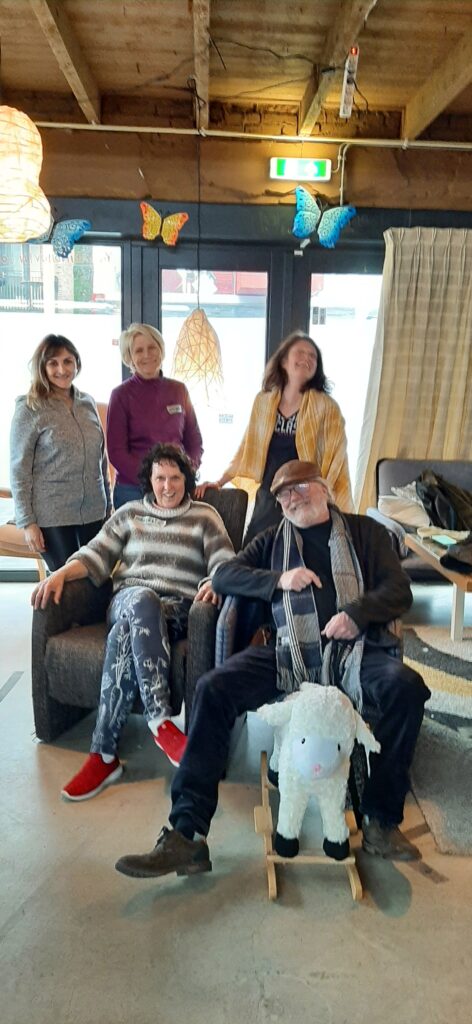
What helped, is that we have both been working in education, and that both of us maintain an artist’s practice involving widely divergent materials and techniques. We share a passion for ceramics, Marielle combining it with paper and textiles (but she’s a pretty good welder too) and Mels’ work includes wood sculpture, graphic art and (digital) photography.
At our studios (Ateliers Patagonia) we have several ceramic kilns and lots of tools and machines at our disposal. They just make things easier.
After Russia attacked Ukraine, we just wanted to help in one way or another. But around us there already were people collecting clothes, blankets, sanitary napkins and other necessities of life. Even housing and furniture were put at the refugees’ disposal. Then we started to wonder what their life looked like. Just imagine: there you are, in a foreign country, with nothing but a small suitcase, a mobile phone and maybe a dog or a cat on a line. It’s hard to make yourself understood, and the phone can only transmit the fighting, suffering and destruction at home.
We imagined that the women (most Ukrainian men were not allowed to leave the country) would need to do something. Using your hands might help to focus their thoughts on something positive, especially if you do it together with fellow refugees or your children. But we were not thinking of simple handicrafts as an exercise: the result should be something meaningful, and if possible useful.
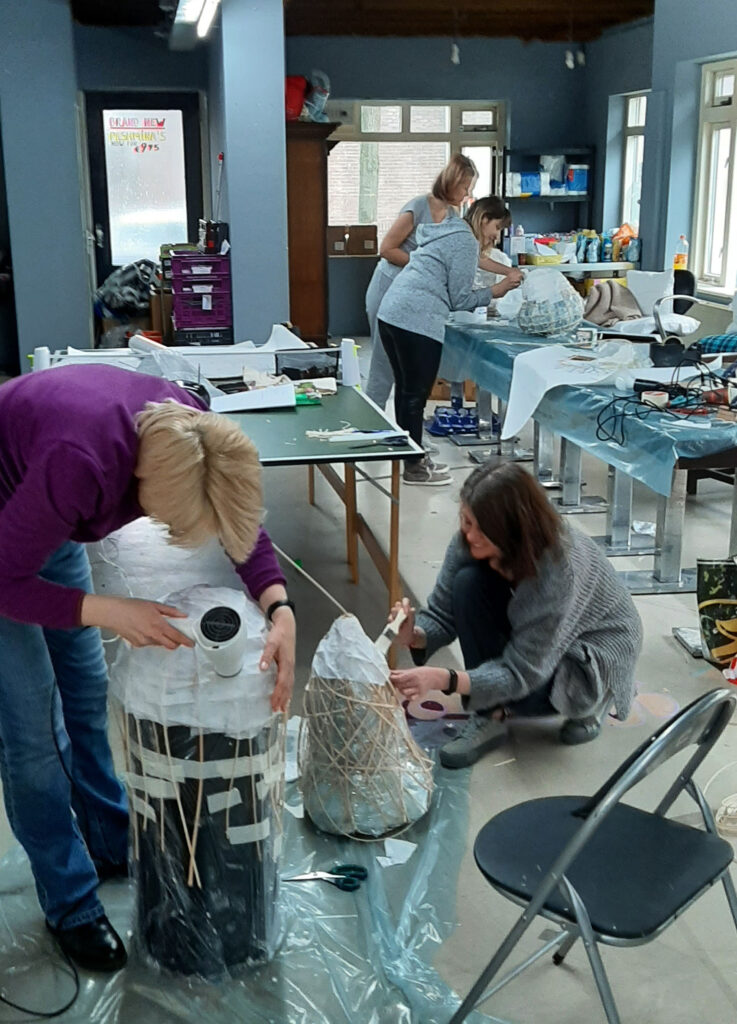
Already at the first workshop, the participants surprised us with their determination and energy. With only the barest of instructions, they all went to work immediately. The Ukrainians’ mentality made us think of what is said of Dutch harbour workers: “Stop talking, just get the job done”. The first workshop was an introduction as well as a kind of test: we made paper lamp shades in Mariëlle’s (rather complicated) Chinese-paper-and-pulp-cane technique. The ‘girls’ did very well and now the hanging lamps are a feature of the communal sitting room.
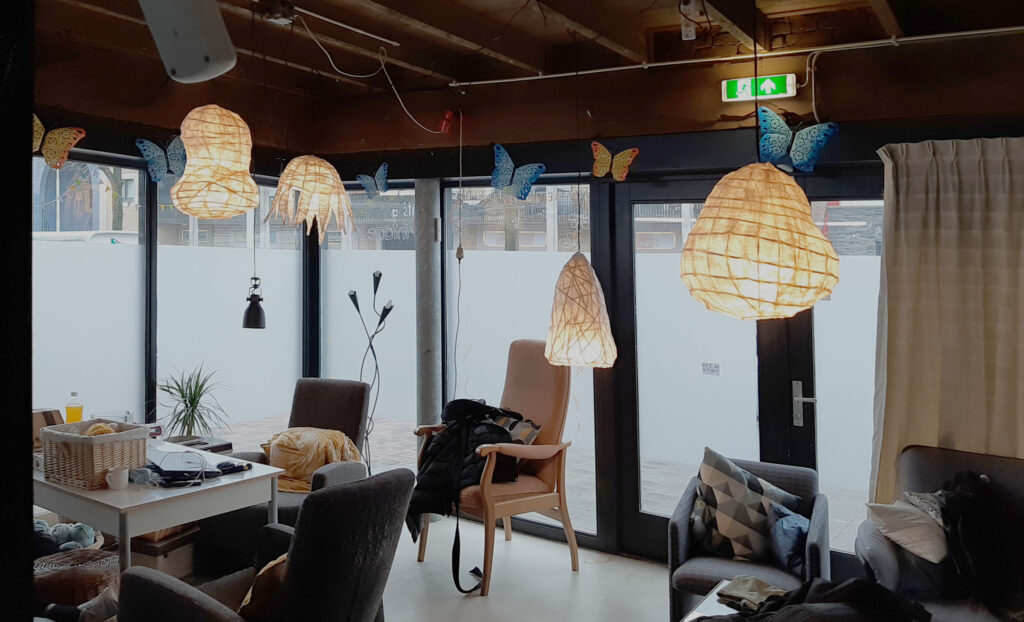
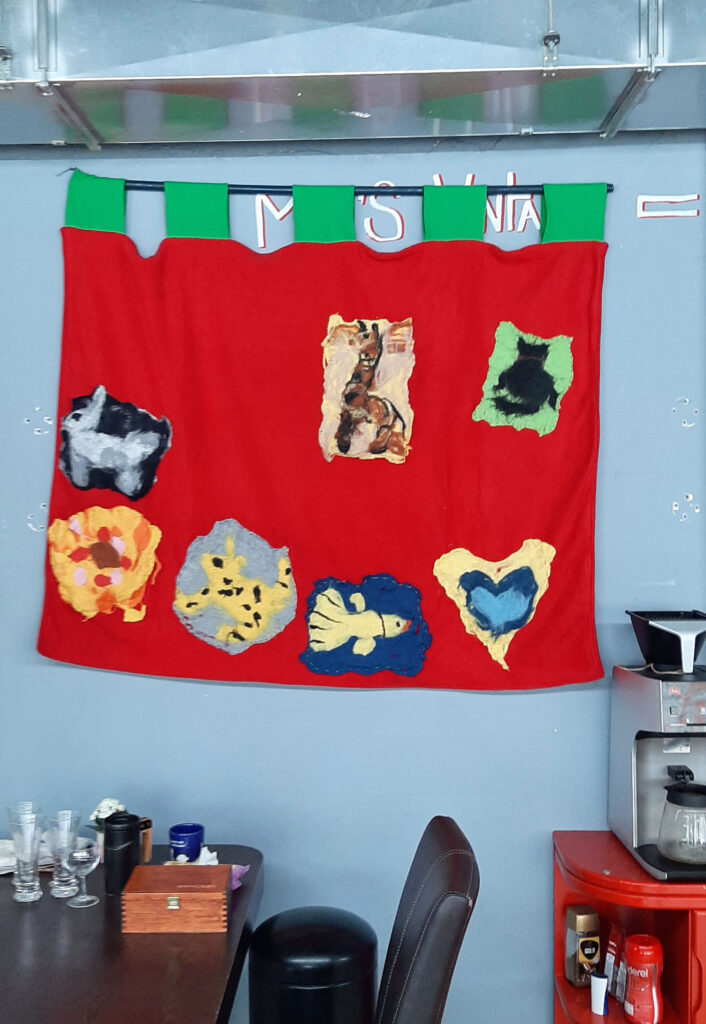
The next time we tried felting: an attractive technique using the simplest of materials: (coloured) wool, water and soap. The group made a nice tapestry with animals, but they seemed to long for a bigger challenge. The following workshop we worked with clay, to create ceramic vases which could (hopefully) be sold on the King’s Day Market a week later. The shapes were modelled using existing vases and other forms, but first they had to be bisque fired at our studio.
We invited the participants to come to our place to do a glazing workshop. Of course they were also given a tour of the five artist’s studios at Ateliers Patagonia. The results of the glazing firing were quite good, and some pieces were actually sold on the King’s Market.
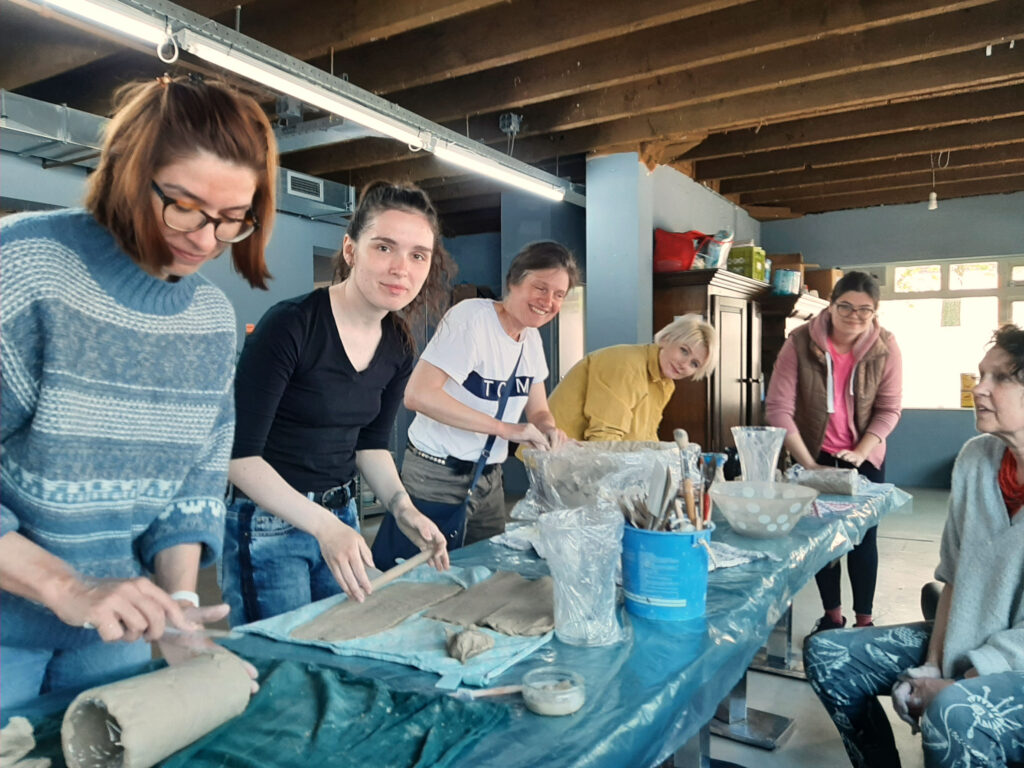
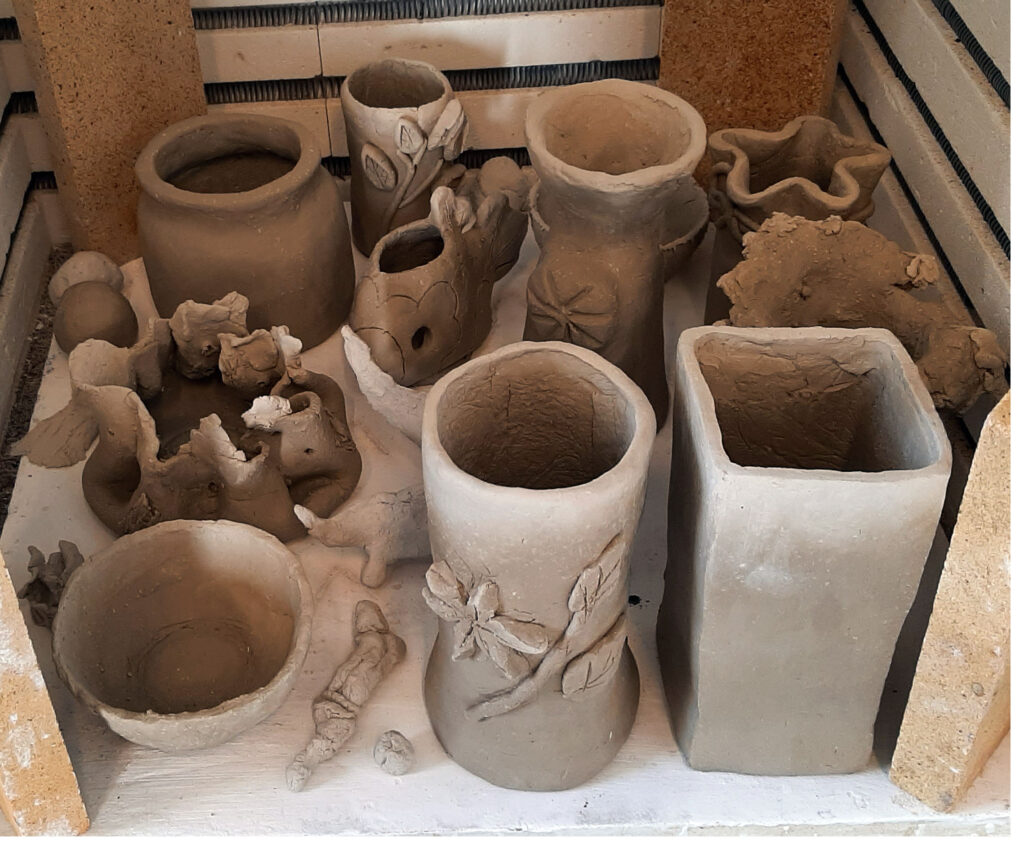
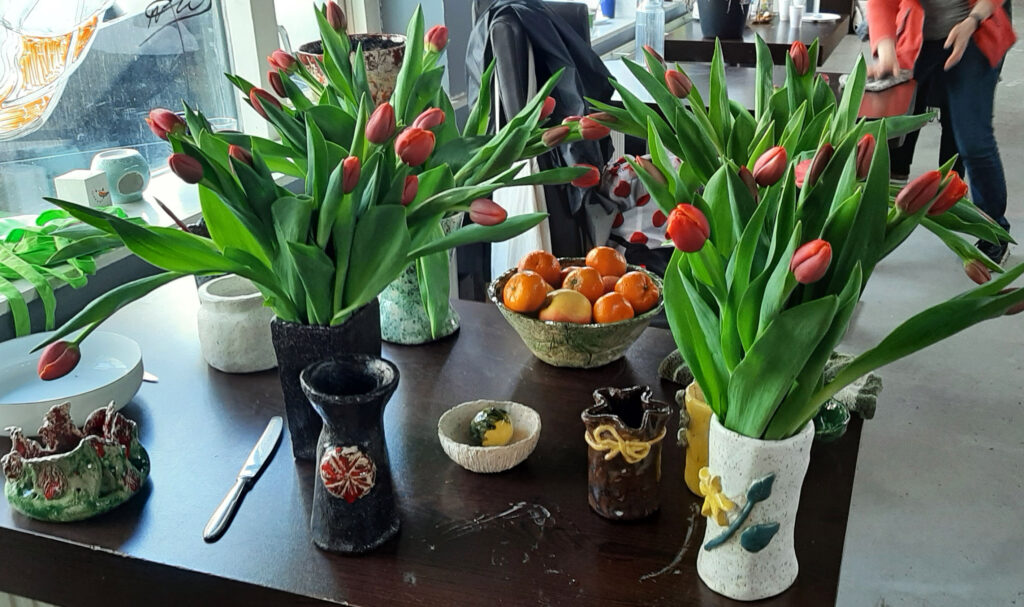
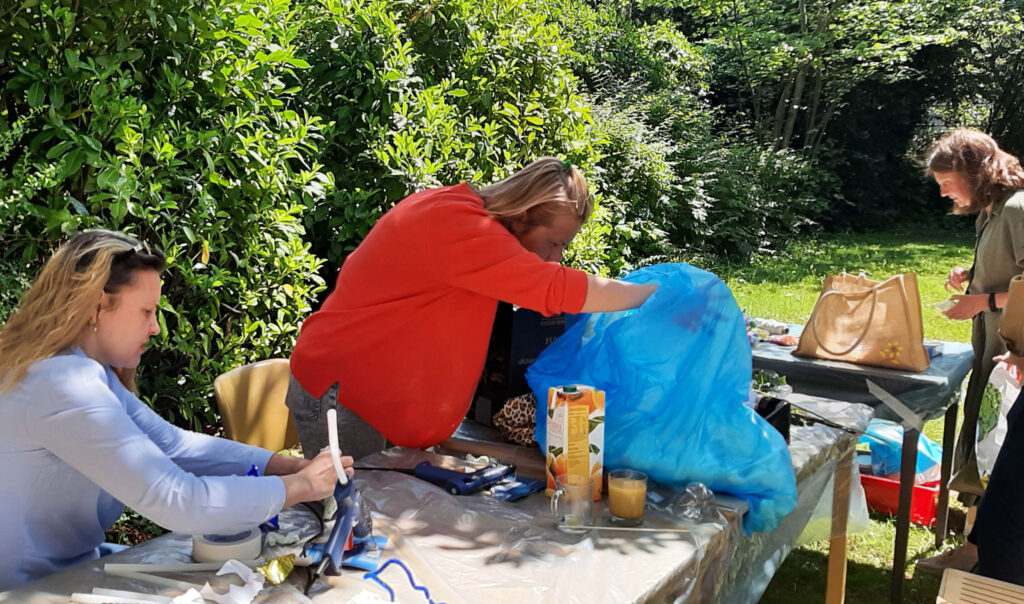
By now, the workshop location shifted from time to time. At the Van Abbehuis, where Ateliers Patagonia had a group exhibition, we organised ‘Ecofun’. It was a session in the gallery’s sunny garden, with the aim to create artworks from trash and residual materials. A whole series of very special pieces were made, which featured in a short exhibition at the gallery.
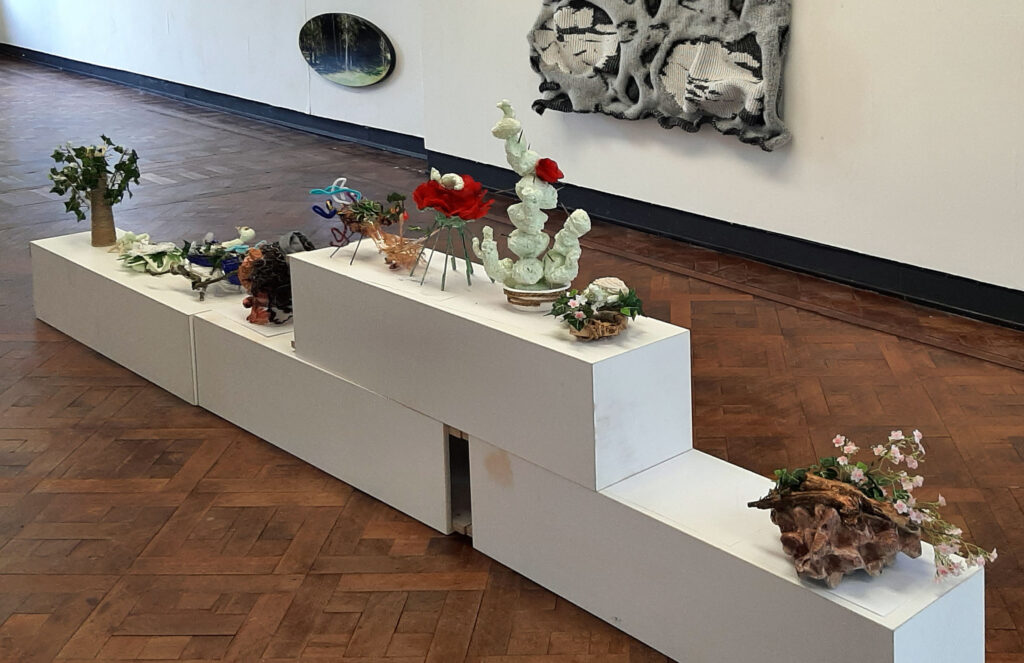
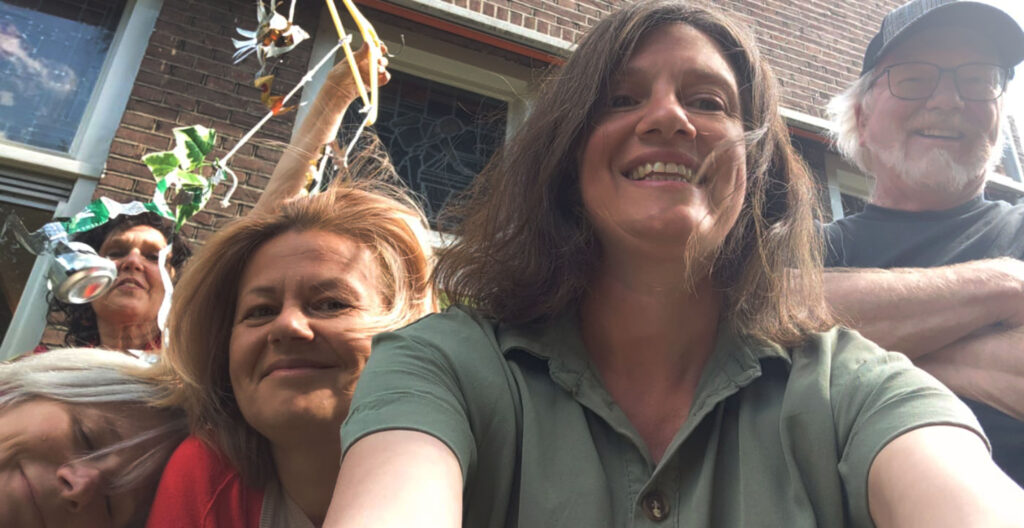
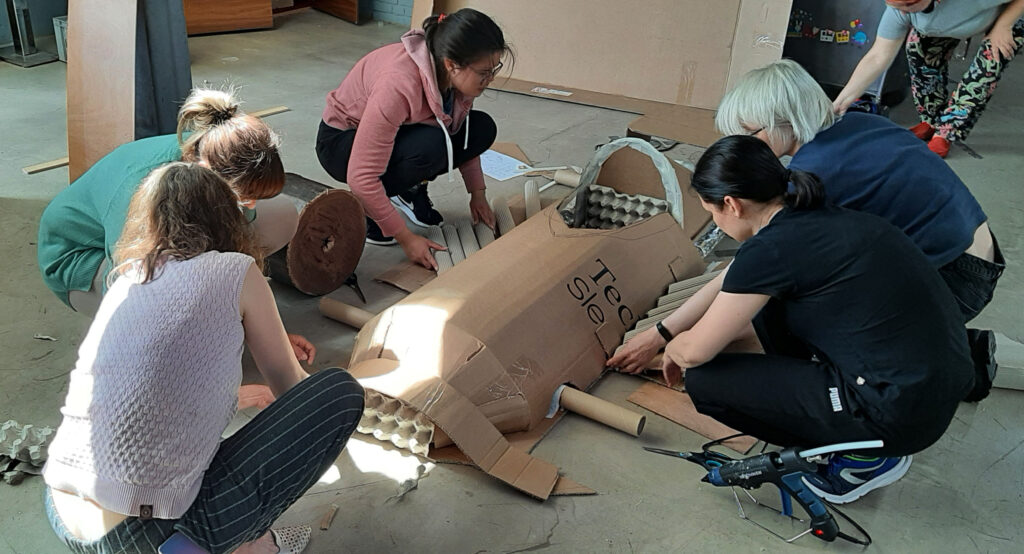
A far more ambitious project was the Racing Car. Mariëlle and I got hold of a few huge sheets of corrugated cardboard. As the name of Max Verstappen was virtually unknown among the Ukrainians, Mariëlle used a tiny Dinky Toy model to make clear what the assignment was going to be: a ‘lifesize’ racing monster. With a lot of discussions and communal effort the group (including a growing number of children) managed to create a very credible racing car, painted in Ukrainian blue and gold. The machine was called the Stefania, after the winning Ukrainian song of the European Song Festival and we hung it in a central spot of the reception hall. Later the workshop’s name as well became the Art Group Stefania.
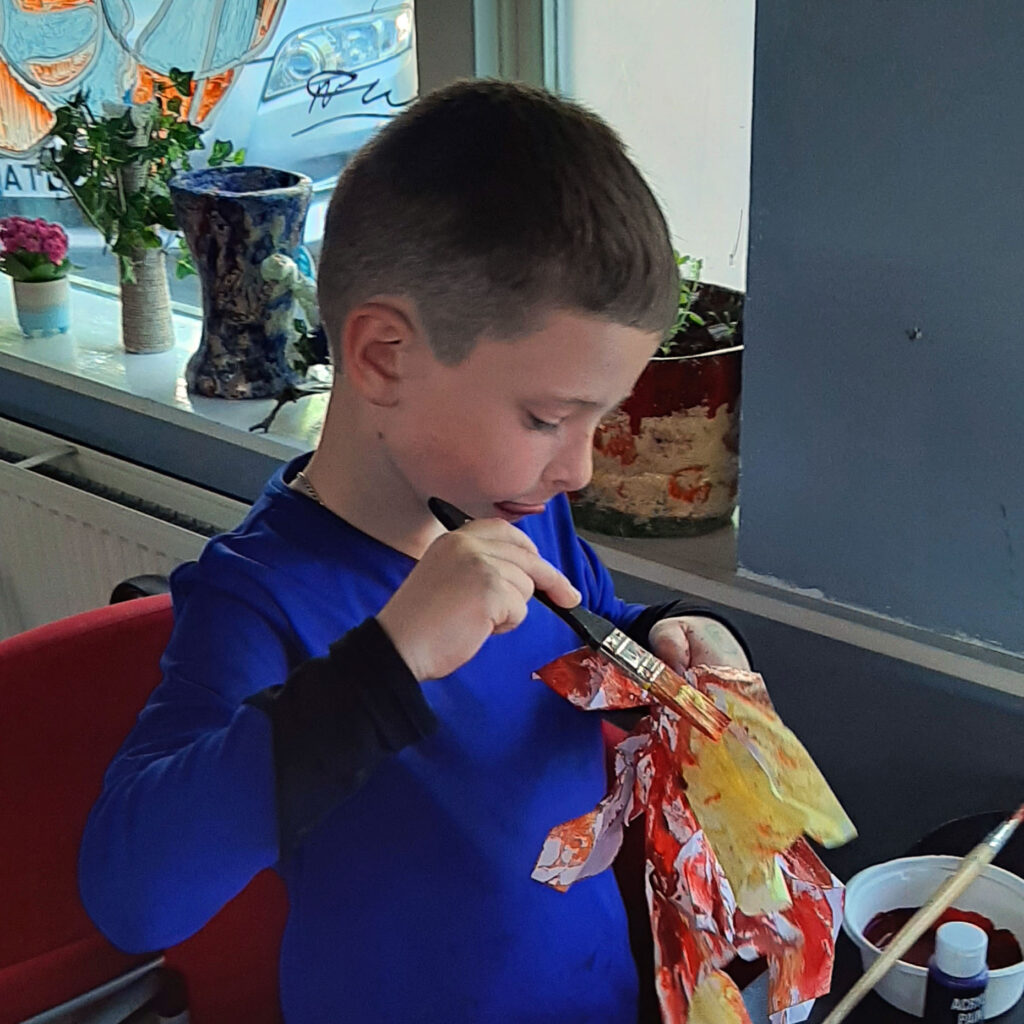
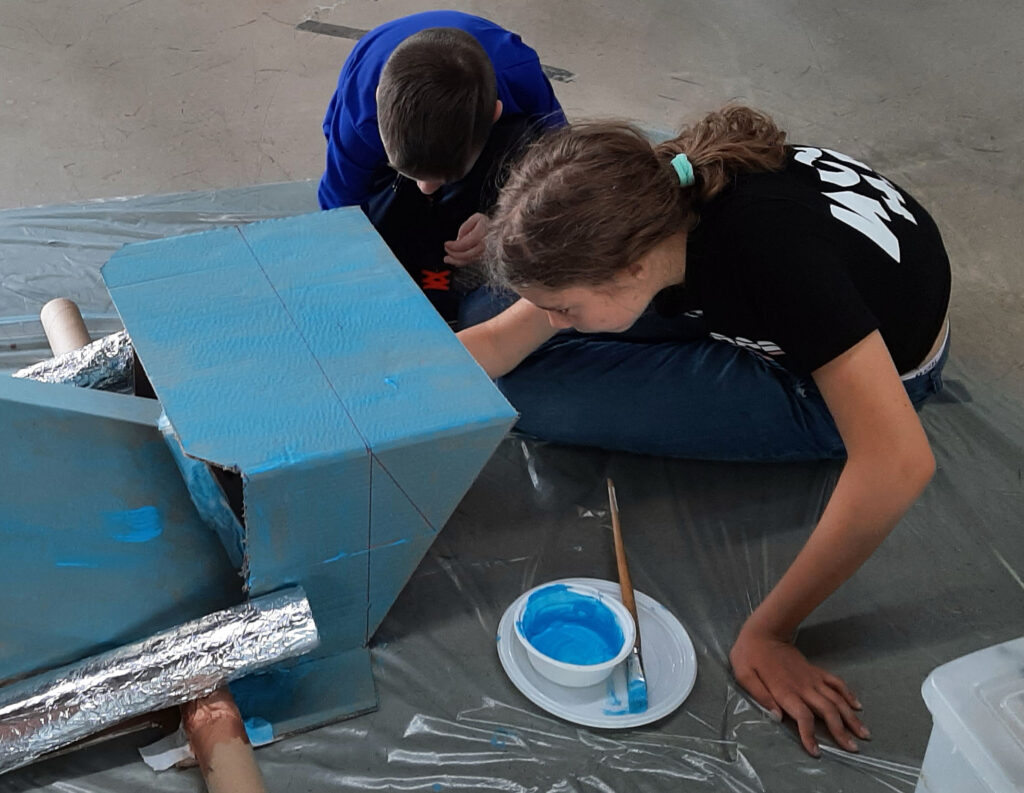
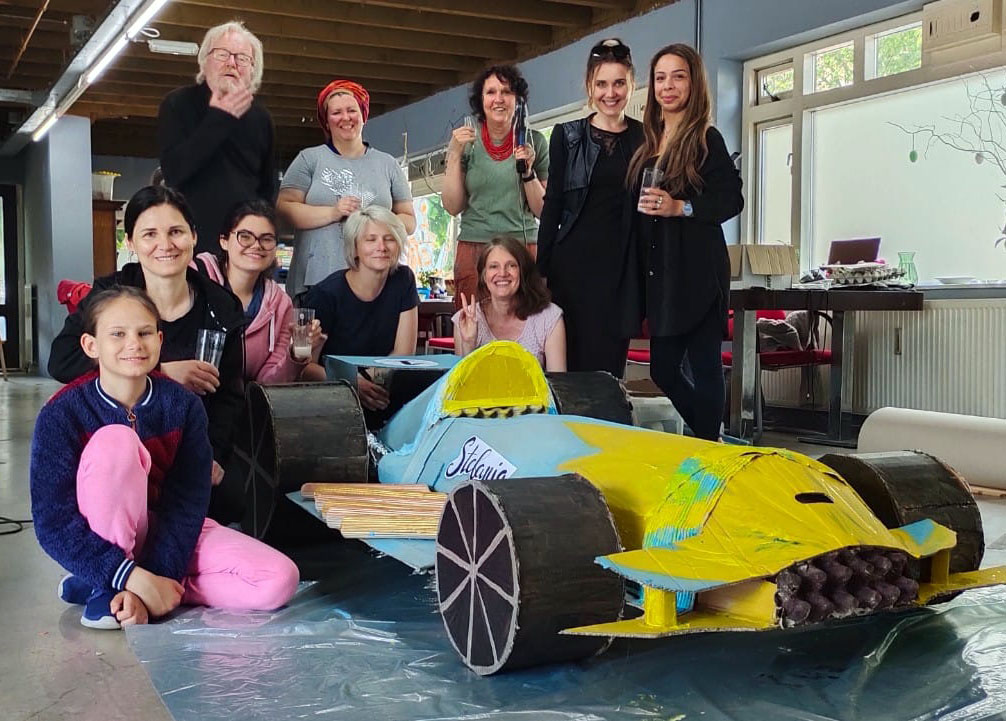
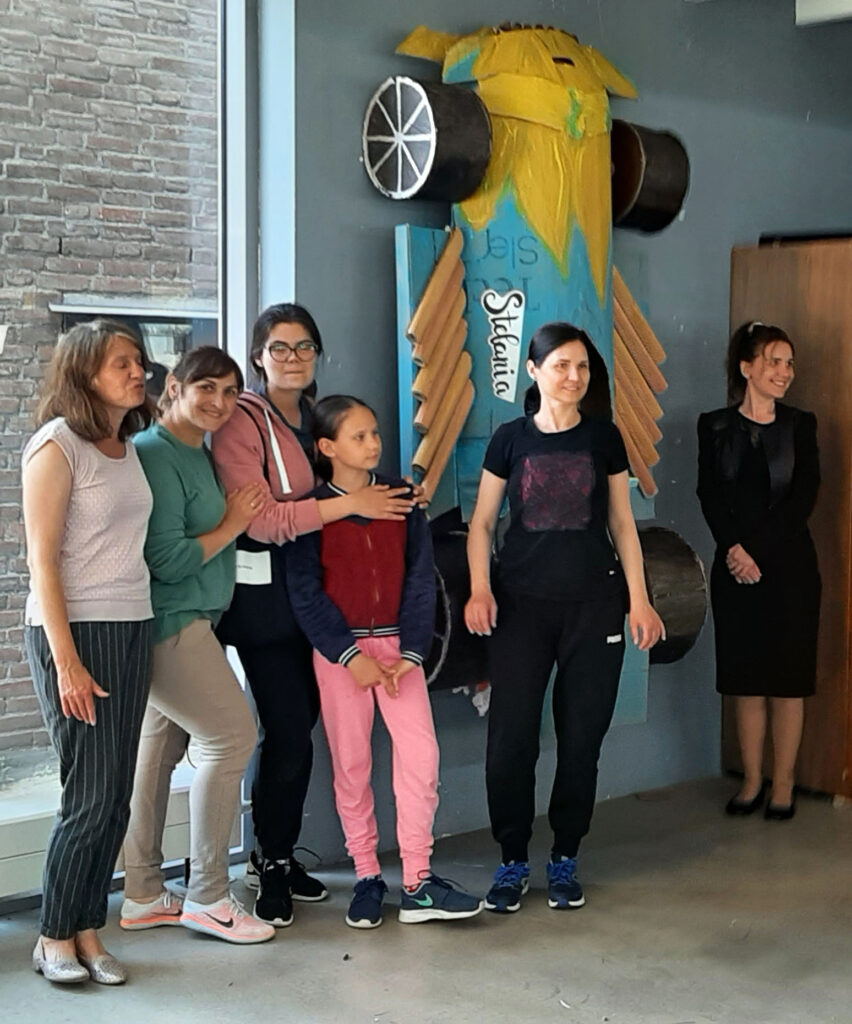
The Insect Hotel was another workshop children could take an active part in. None of the participants had ever heard about it, but it seemed like a good idea in the urban high-tech environment of Eindhoven. A small ‘cupboard’ with various materials, in which wild bees, bumblebees and other endangered insects can lay their eggs and propagate. The ideal materials for insect hotels are things like scrap wood and natural materials you can find in the wood. In the beginning we thought of trying to sell them, but at the end of the workshop most of the participating ladies liked them so much that that they wanted to install them around the refugee centre – or even, at some unknown point in the future – at home, in Ukraine.
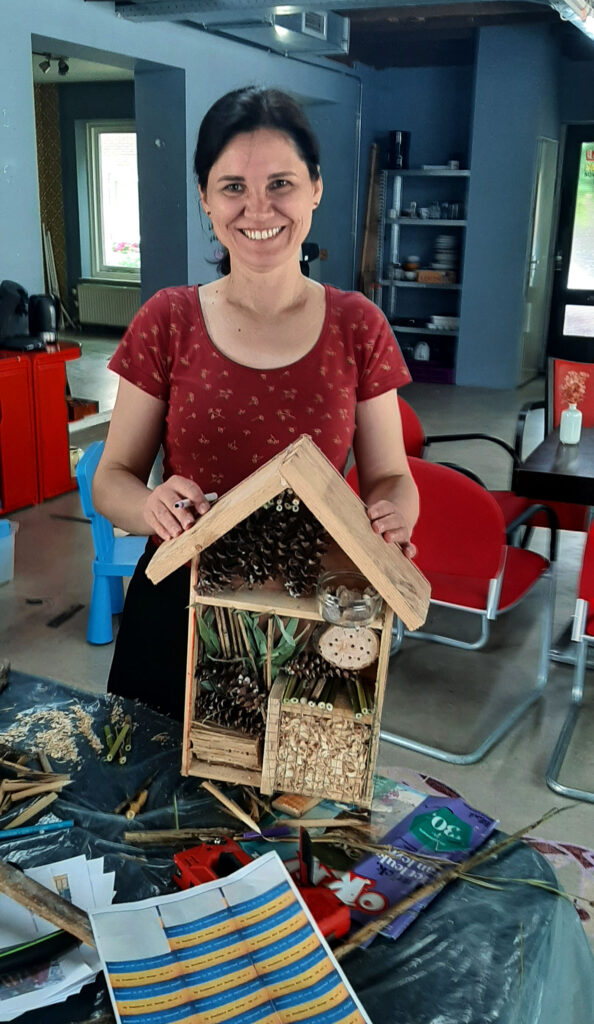
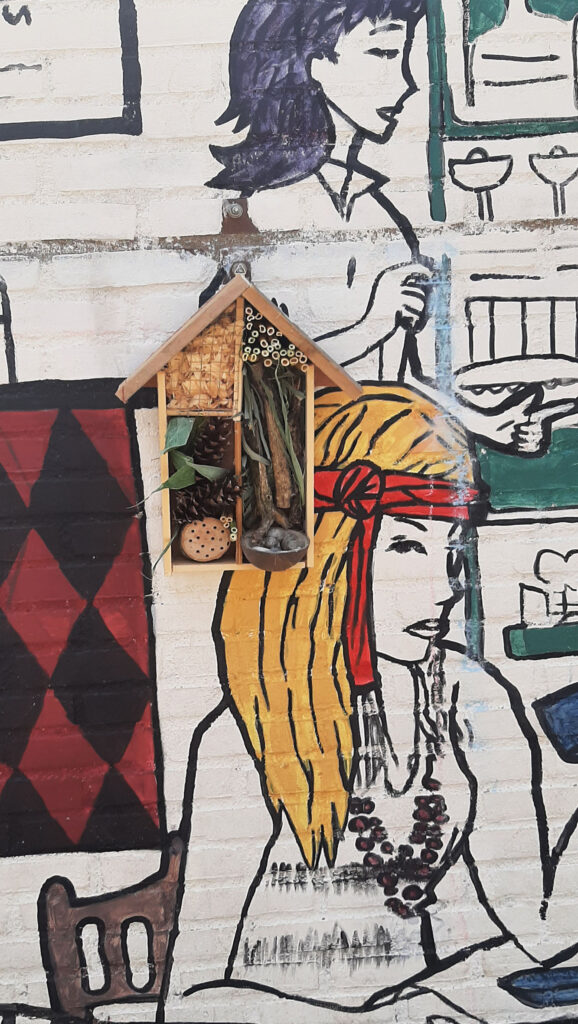
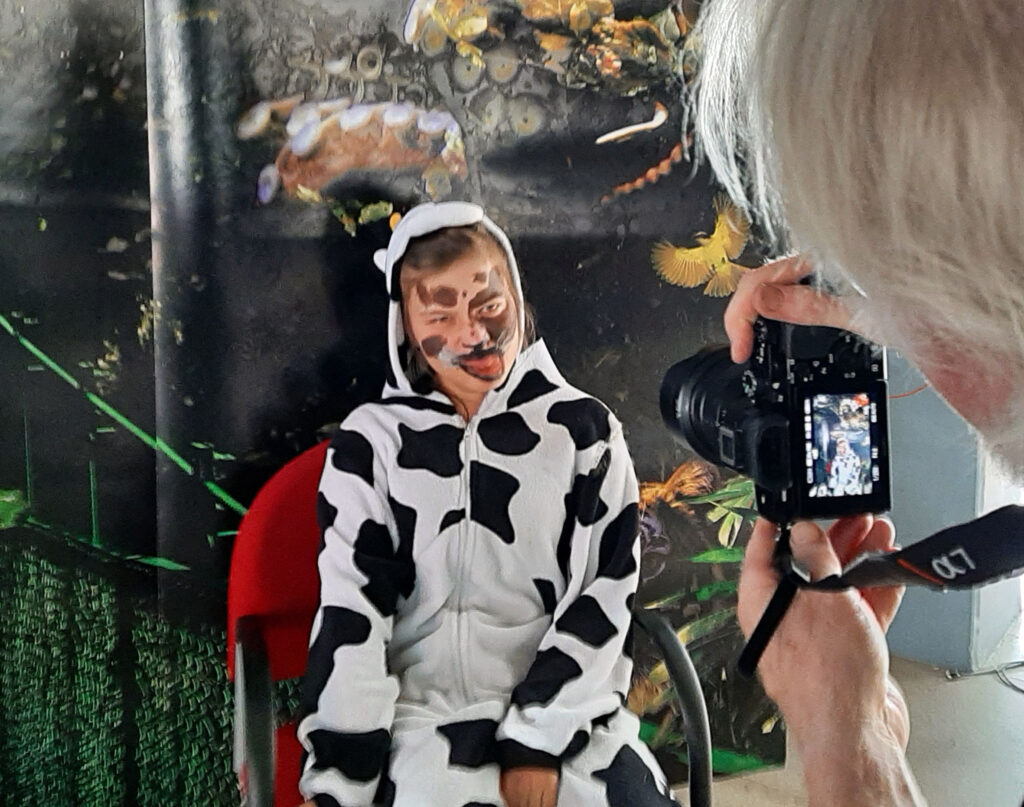
Wild Animals. This carnivalesque theme was based on a workshop we once did in Amsterdam: the participants paint each others’ faces to mimic ‘wild animals’ and put on animal costumes. Then they are photographed in front of a large backdrop depicting a jungle landscape. Using an inkjet transfer the picture is ironed onto a T-shirt, which may further be decorated with textile markers. Great fun!
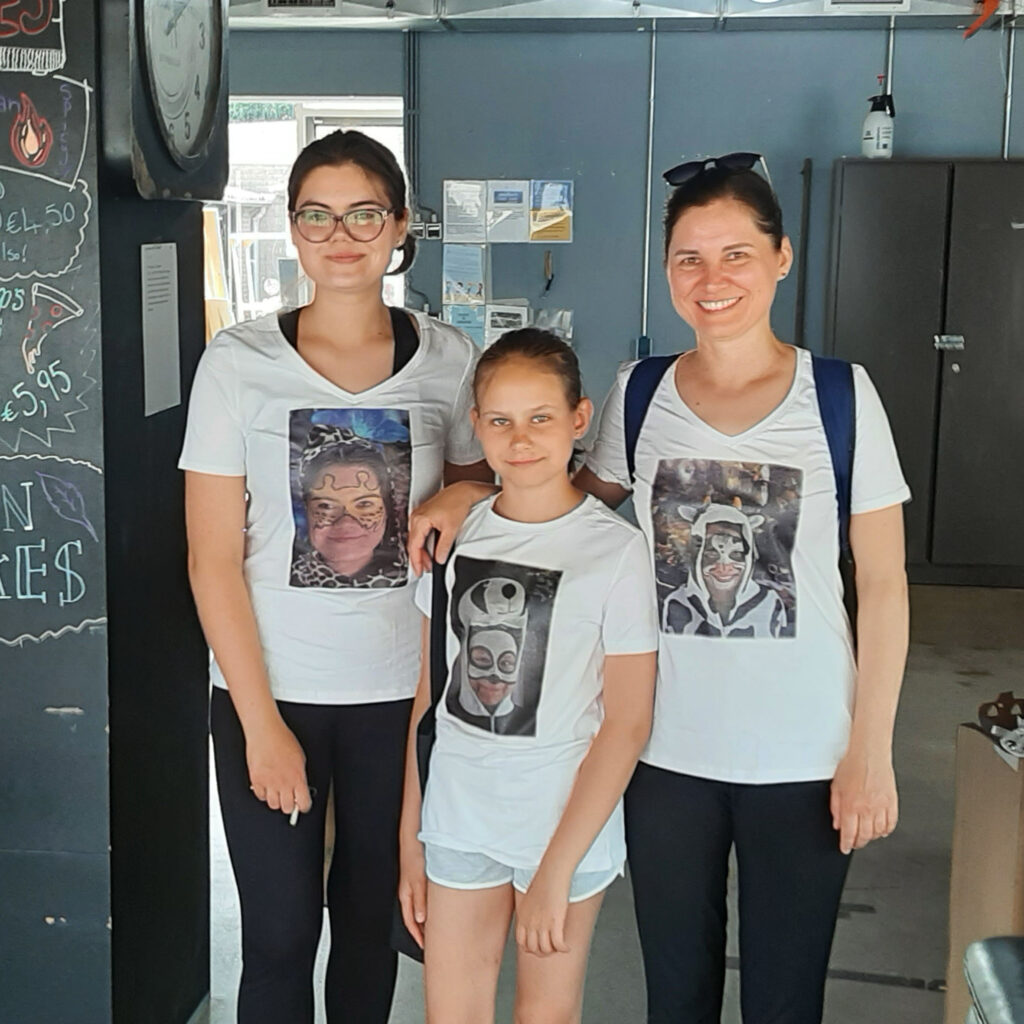
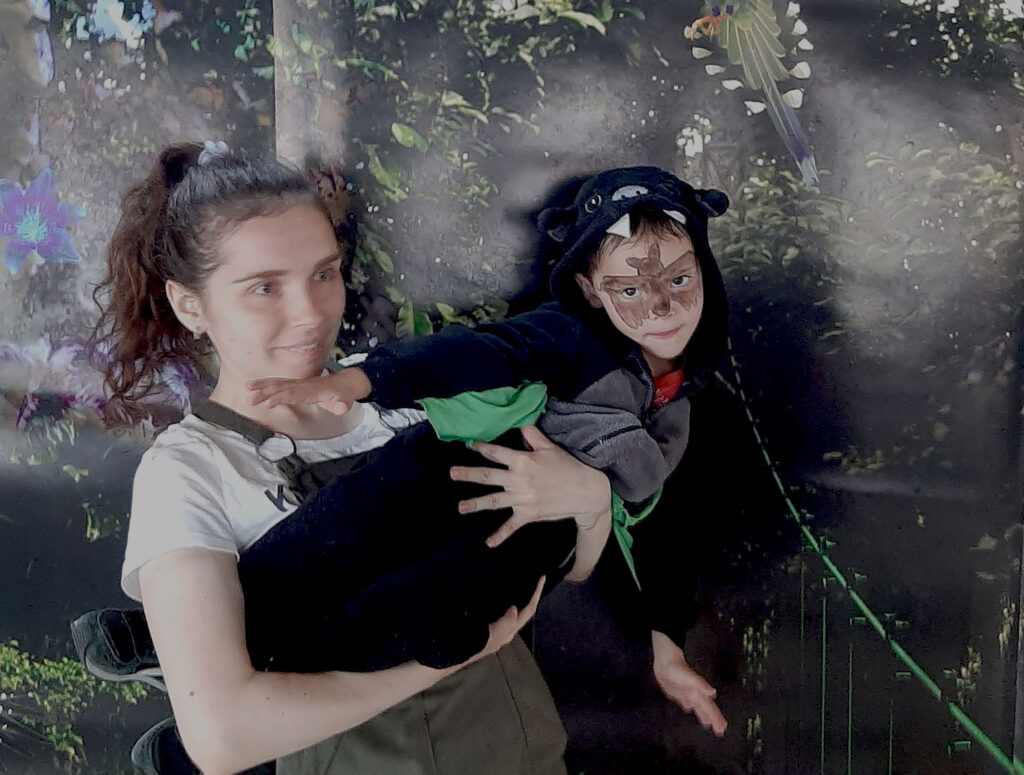
Drypoint is a printmaking method that involves scratching an image into an (acrylic) plate with a pointed tool and then print it on paper in the way etchings are printed. It is a great introduction to graphic techniques. You can also use shaped or deformed plates to emphasize the image. It is impossible to print large editions – the acrylic is too soft for that and it wears down after a few prints. But everybody will be enthralled by the magic of printing. In our studios we could use a good etching press, rag paper and printing inks.
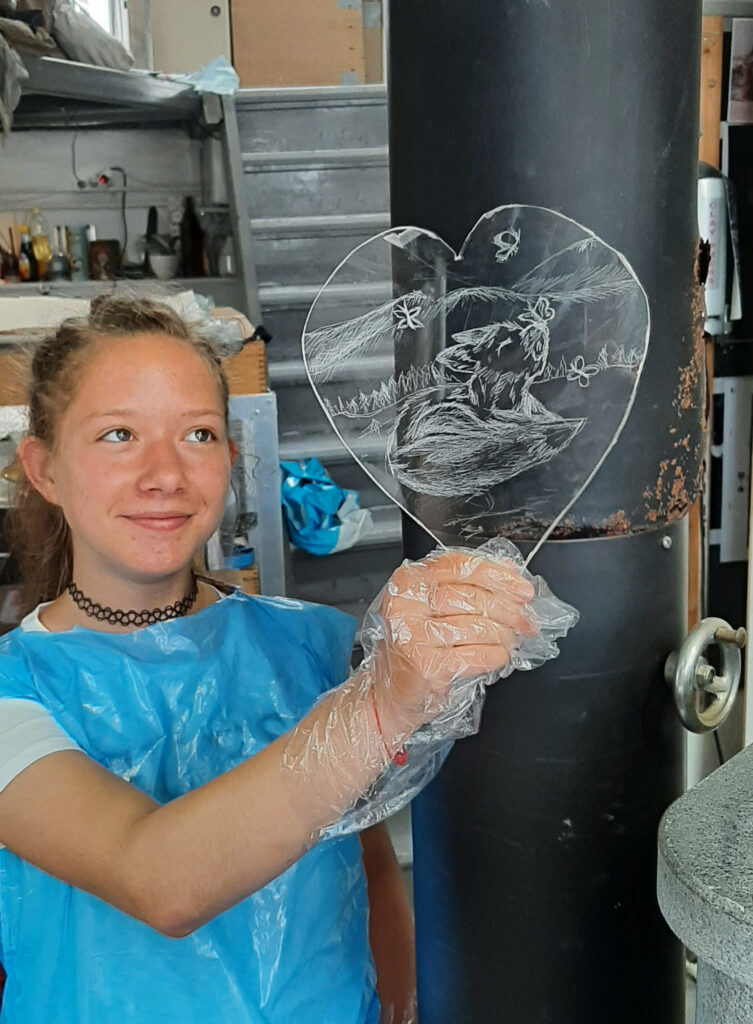
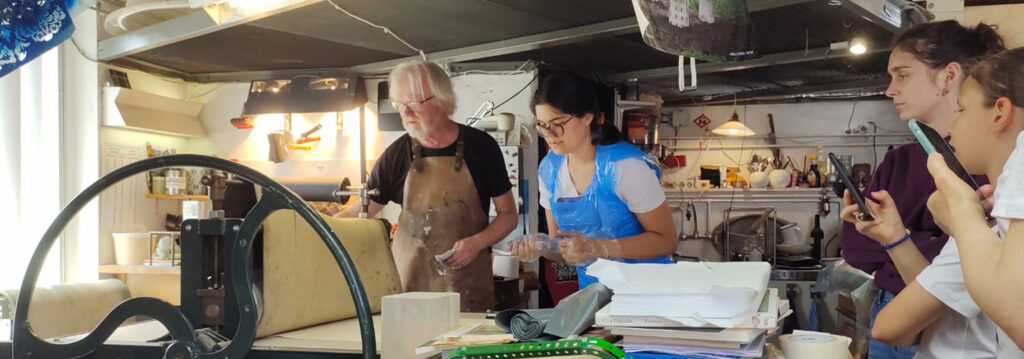
One of the last workshops before summer was developed on the basis of an attic find: an number of small display boxes. The participants – mostly children, this time – had to act as a curator and create a small exhibition, using various natural objects and materials, like stones, animal skulls, shells and a shark egg. They also had to tell the accompanying story, of course. Using our mobile phones, it was translated from Ukrainian to English or Dutch.
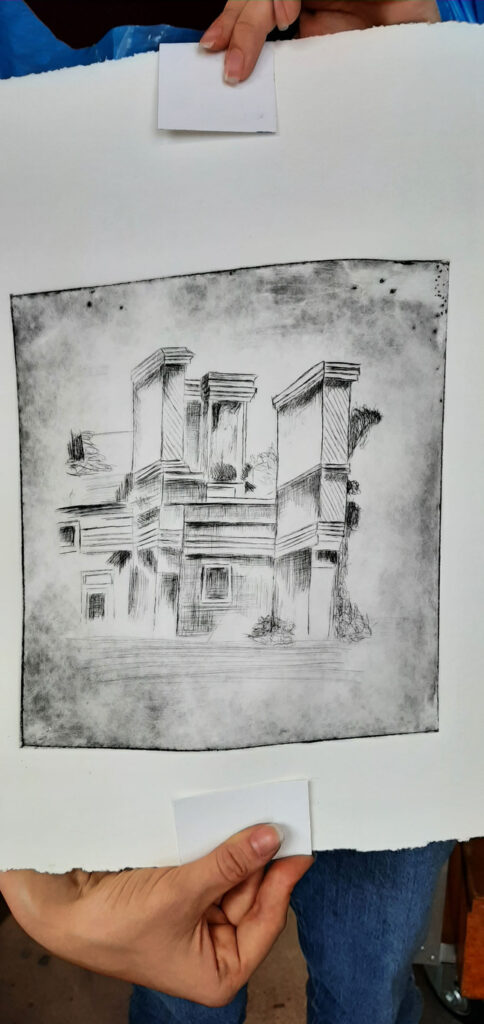
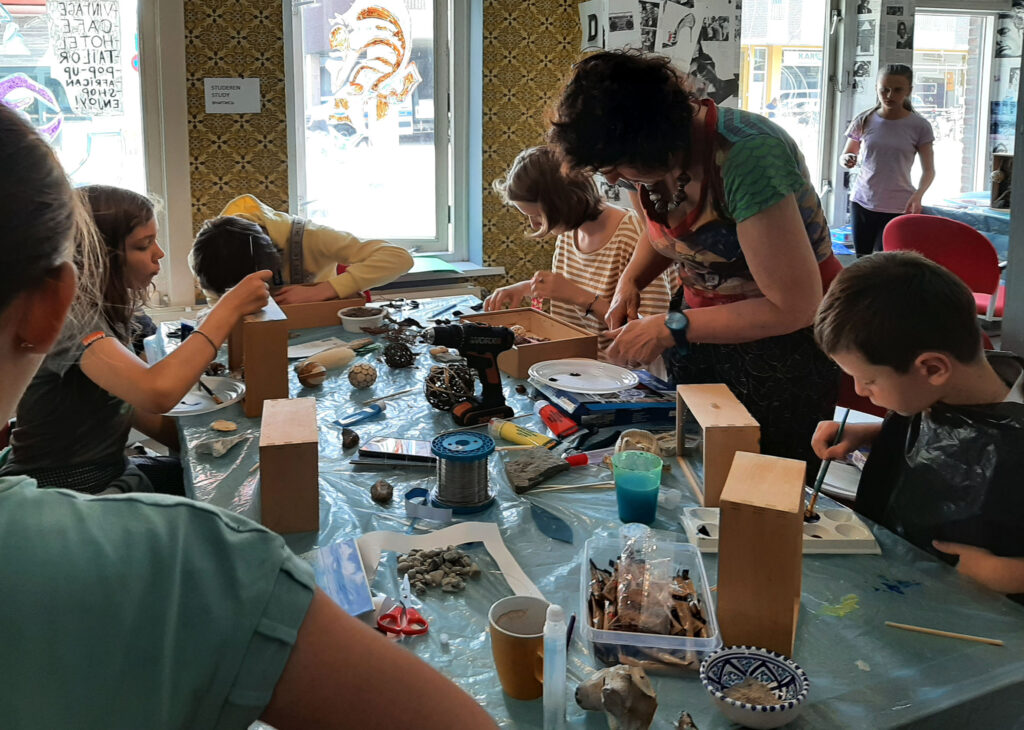
As we were planning a stay at Artak Residency in Iceland during August and September 2022, we wondered if and how to proceed with the workshops. The future of the war was impossible to predict, but by now the workshops seemed to be an indispensable part of the Ukrainians’ and our life. We hardly could ask another artist to take over, considering the amount of time and effort it took us – we could not even think of anyone. So we decided to hand over the workshops to ‘the girls’ themselves. They were competent, energetic and enthusiastic enough, we thought.
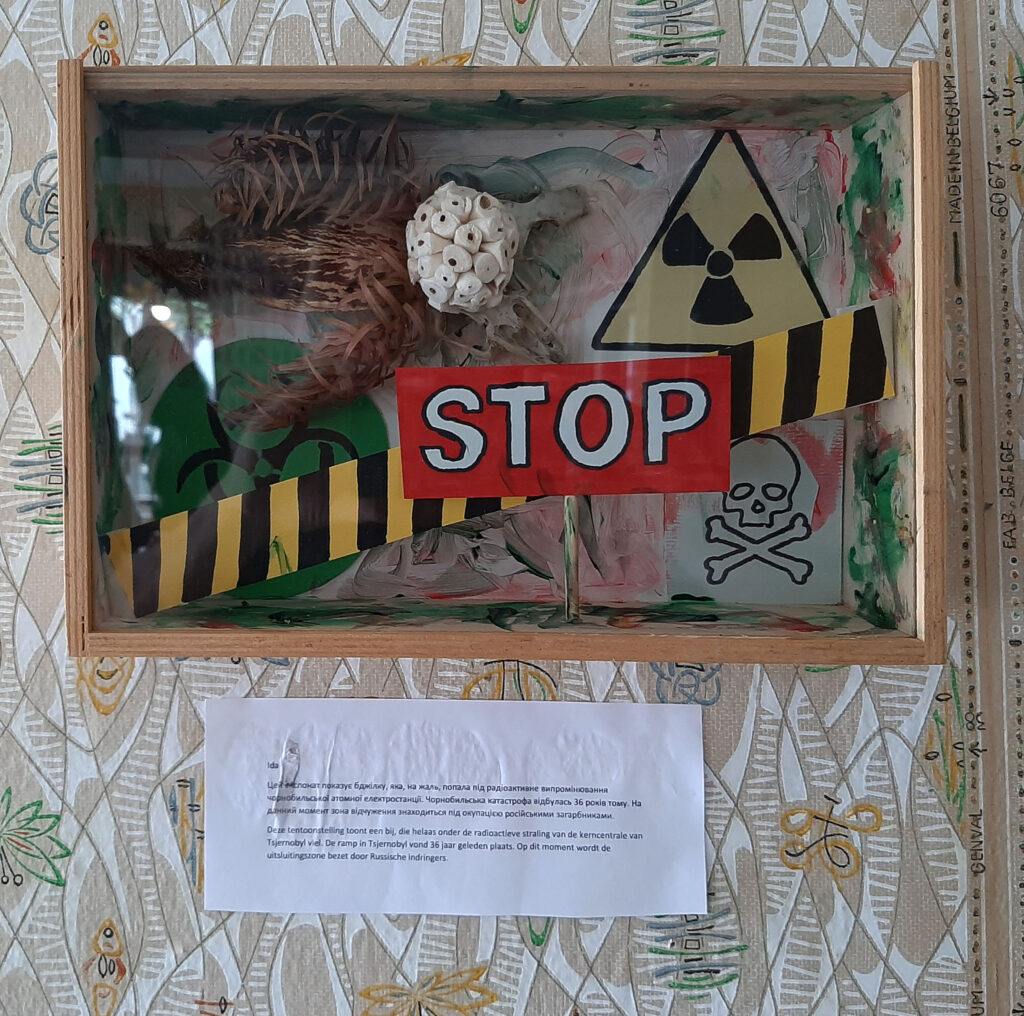
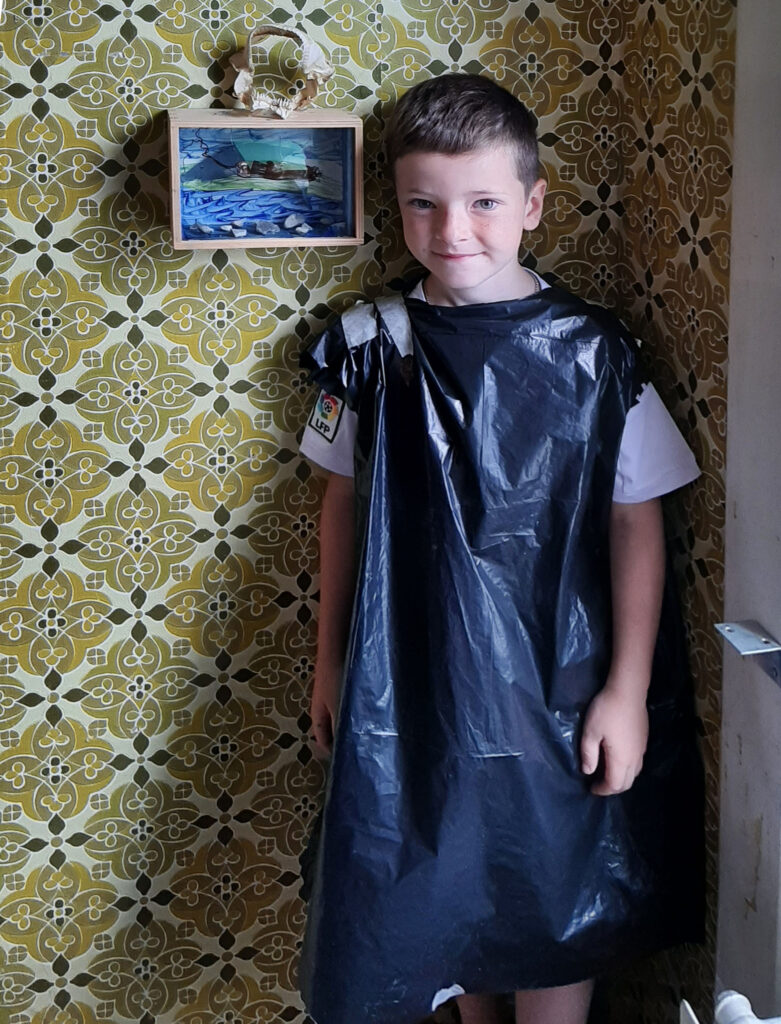
And they had already contributed ideas and found materials to the workshop themselves, such as a discarded pile of large flooring tiles. These were used summarily by the participants to create glaze paintings, which were fired in the kilns at Ateliers Patagonia.
We decided to make a number of boxes containing widely different materials, with (or without) clues or suggestions what to do with them – about one ‘bomb’ full of materials and ideas for each week we would be away. Hoping that, on our return, we could continue the course.
Also, by the end of July, Mariëlle had contracted Covid-19, interrupting the weekly workshops. Fortunately she had no fever or serious symptoms, and after about two weeks she tested negative again. But she regained her usual energy level only slowly, so it was a good thing we could travel at leisure to the Danish port of Hirtshals, where we took the ferry to Iceland.
A report on our Iceland residency will follow…